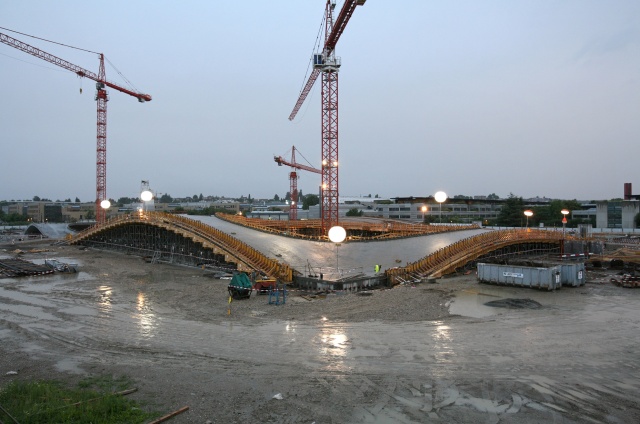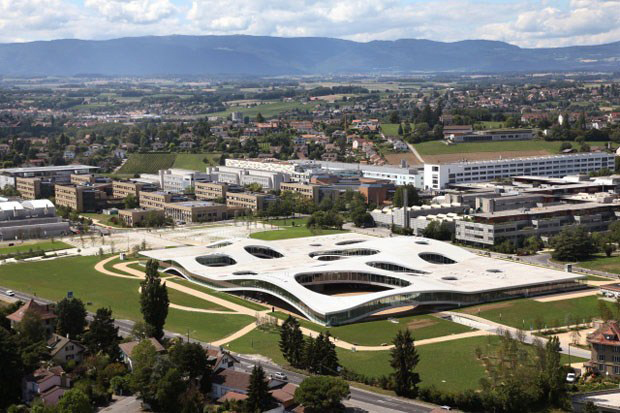DIGITAL LOGICS – SANAA & DELANDA


In the technological era, the architectural intervension has seen the introduction of the parametric and
computational design. These design tools, have shaped not only the way we learn about architecture in
schools all over the world but also the way architecture is designed and defined. Examples of digitally designed
buildings are increasingly being constructed in the last couple of decades, works such as SANAA’s
Rolex Leaning Center are a clear example of these logics. The building is the overlapping of 2 concrete
shells that create a 1 story rectangular building along a flat surface. The architects have aimed at developing
the change in program between spaces in a particular way: instead of creating walls and partitions,
they have designed a change in topology to stimulate the difference between two different functional
spaces. Beyond this artificialy created landscape, the building also features circular openings, which allow
light to enter the building and at the same time create different outsite-inside relations. This concept of
the building defining its form from its own behaviour and composition, clearly relates to the concepts of
form and its genesis by Gilles Deleuze. In this texts, written by Manuel Delanda, Deleuze develops a theory
in which matter, does not actually transform according to the phenomenons that occur in the environment,
but instead they develop from their own inherit qualities. This realist theories, state that in fact, all
types of behaviour of any matter exists even when no one is there to witness. Meaning that natural forms
in elements, particles and materials are inherit in their existant and do not depend on the phenomenas
that happen in the exterior environment. However, Delanda describes these theories of form from Deleuze
to also extend to other fields beyond science. Including literature, film, painting, etc. Although, Delanda
never mentioned Deleuzes views on the architectural practice, many architects, including Peter Eisenman
have related their practice to the works of the french philosopher, relating his work and Francis Bacon theories.
Nevertheless, I dont think that the design of form in the architectural practice should be inherit in its own
logics. Firstly, because Architecture is not only the design of a building, the greatest place of architecture
lies in the behaviour of people, which is in itself an overlay of phenomena. Socially, economicaly, politicaly,
religieously, etc. Materials do have an inherit quality in every sense of the word. They are a series of qualities
that behave according to exterior physics and internal qualities. However, they are placed in and arranged
by humans. Humans that have themselves different qualities and are not void of external phenomena.
Although, advanced architecture aims at understand the qualities of matter in nature and apply it to architecture.
I feel that we must use the tools of the digital world to also express and understant the nature
of human behaviour and enhance the interaction between what is designed with an intention and what
the user needs and experiences.
“Digital Logics – SANAA & DeLanda- JMSR” is a project of IaaC, Institute for Advanced Architecture of Catalonia developed at Master in Advanced Architecture in 2016 by:
Students: Jean Sebastian Munera Reyes
Faculty: Maite Bravo, Ricardo Devesa, Manuel Gausa
